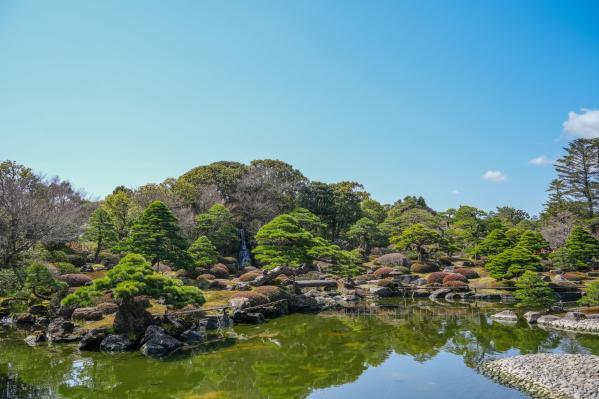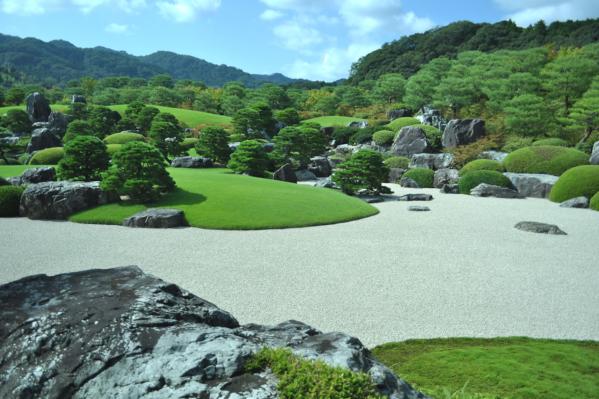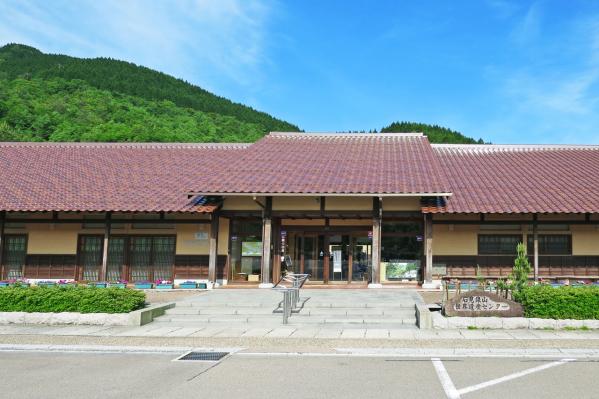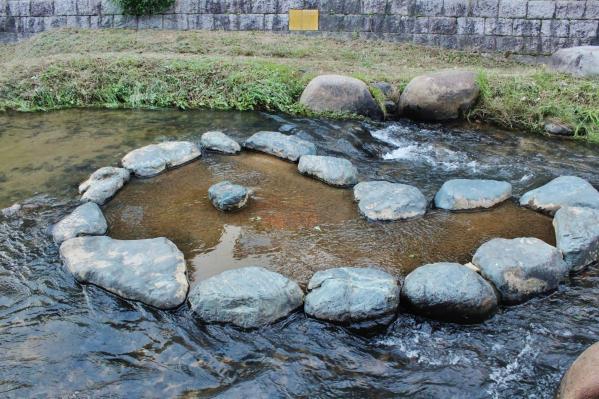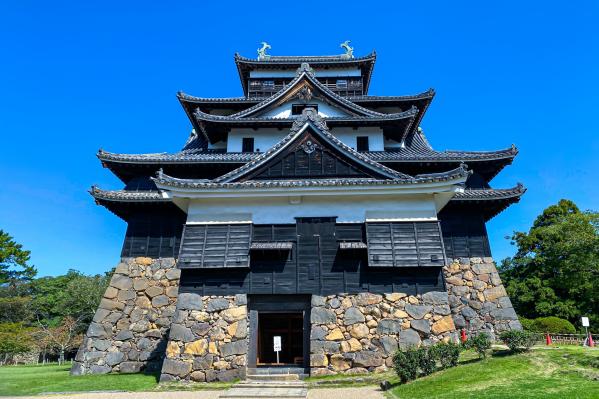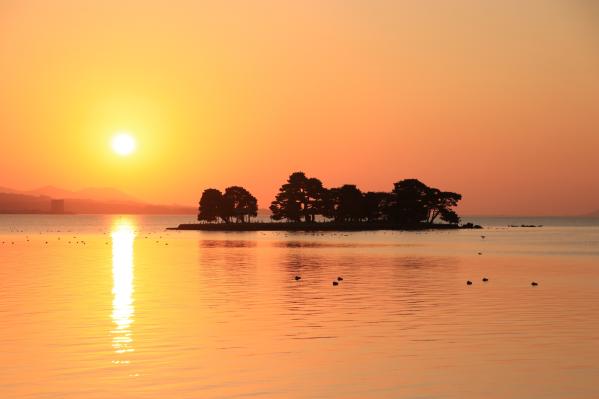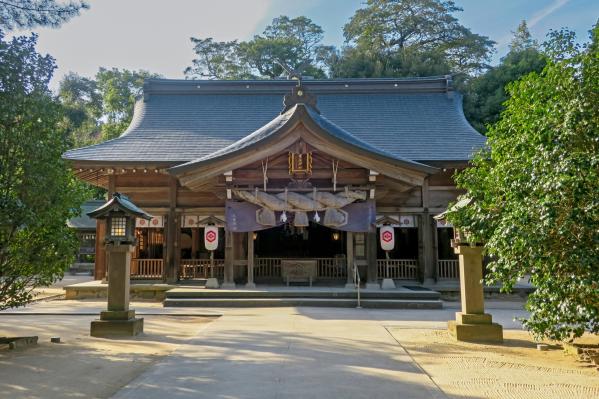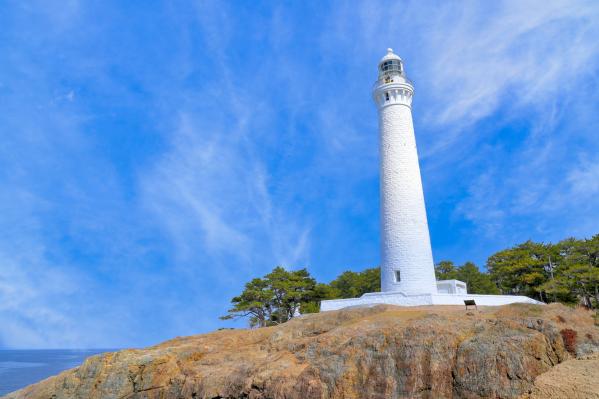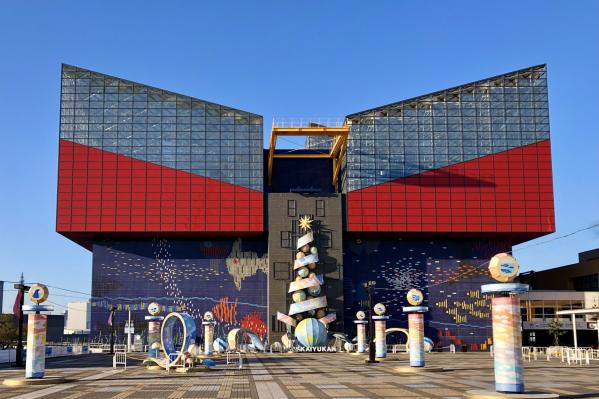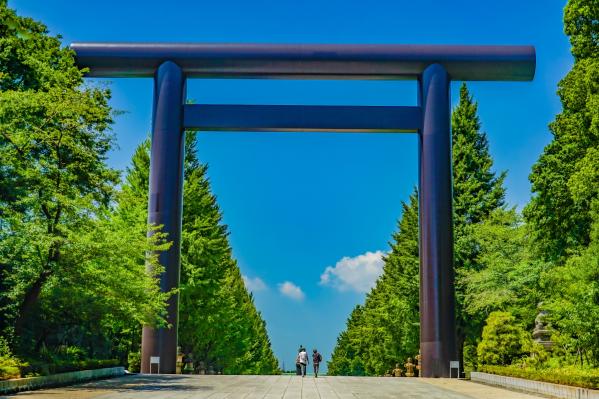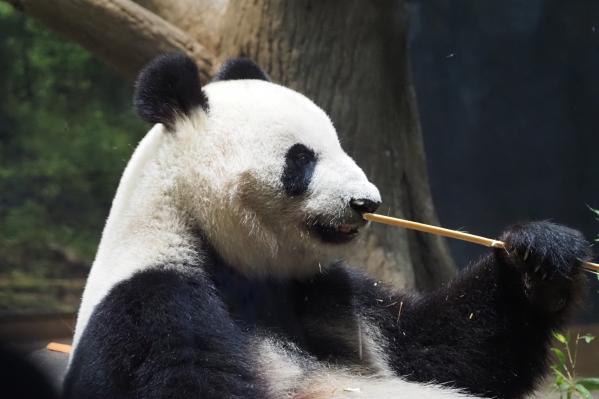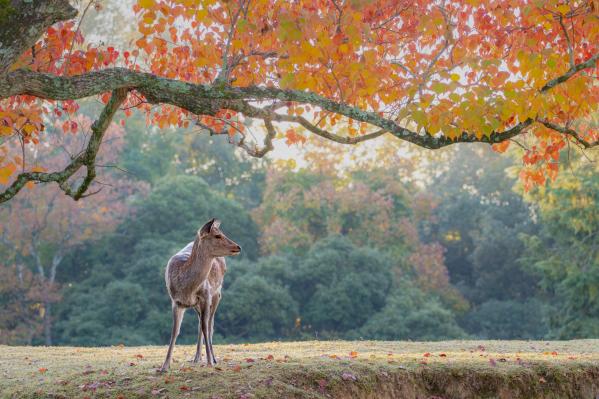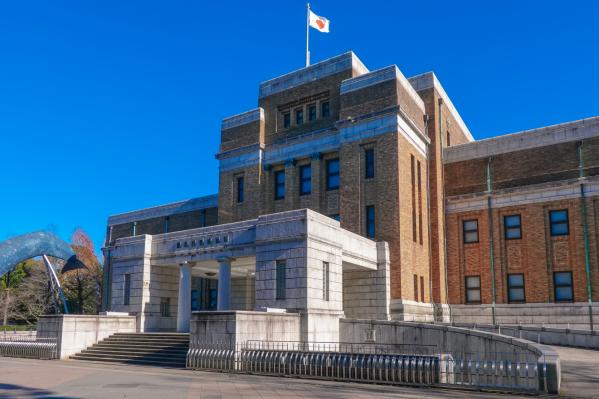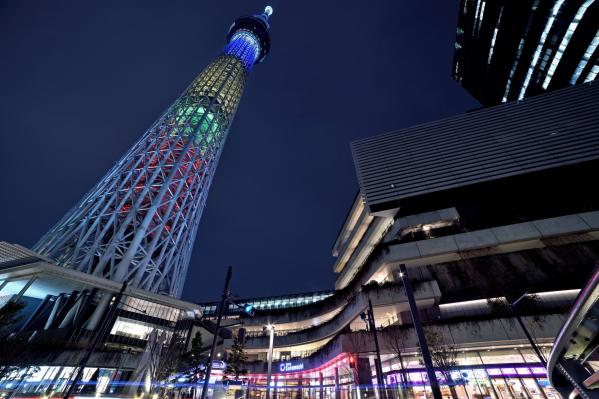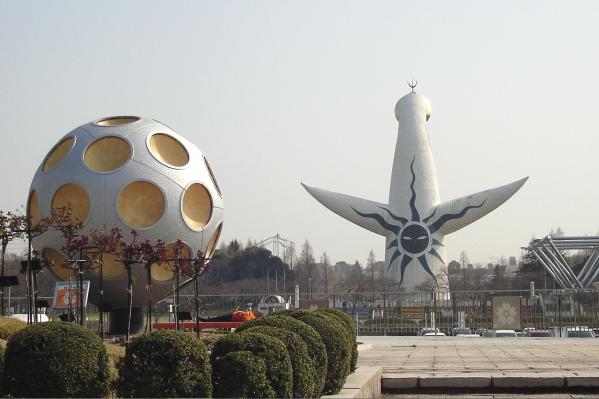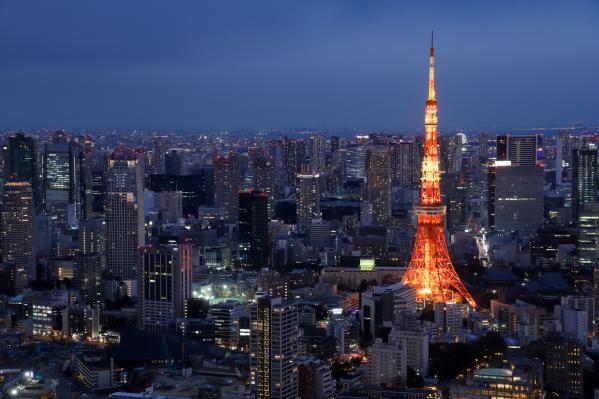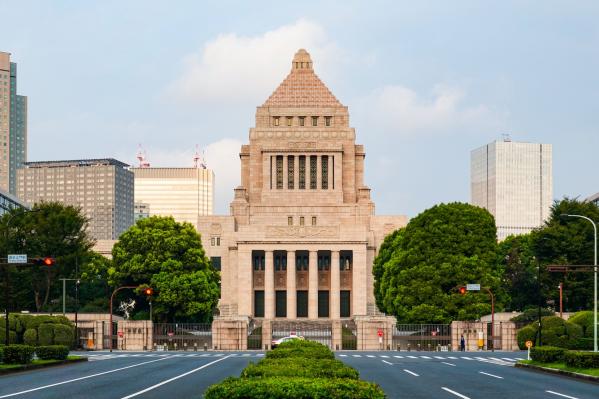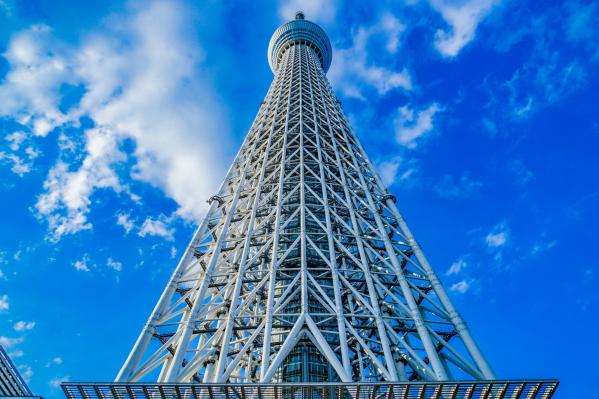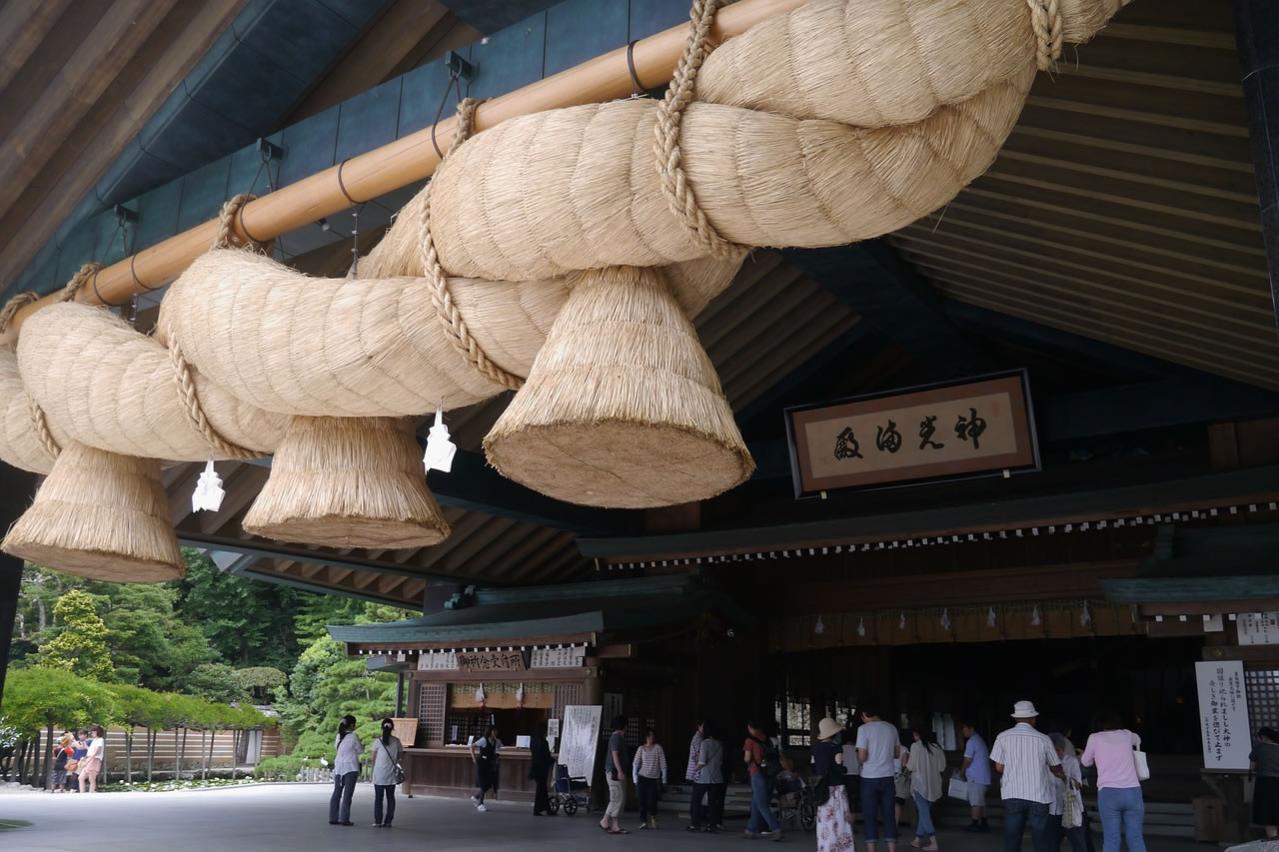
Izumo Taisha Shrine
The grounds of Izumo Taisha are beautiful, especially in spring when cherry blossoms are in full bloom, and the majestic Yakumo Mountain in the background offers stunning views in its fresh green and autumn foliage. Additionally, a large shimenawa (sacred rope) is displayed at the Kaguraden, which impresses visitors with its grandeur. The Kaguraden hosts rituals and weddings, creating a sacred atmosphere.
The main shrine of Izumo Taisha is a prime example of the Taisha architectural style, with a rich history embedded in its structures. The discovery of pillars measuring 32 jō (approximately 96.96 meters) in height lends credibility to the legends. The interior of the main hall is divided into a grid pattern centered on the Shin no Mihashira (the sacred central pillar), and the divine seat is facing west instead of the usual south.
Izumo Taisha attracts numerous visitors from across the country, and during the "Kamiari Matsuri" held from October 11 to 17 of the old lunar calendar, eight million gods gather in Izumo for a festival that connects people’s fates, creating a lively atmosphere. Deeply rooted in Japan’s history and culture, Izumo Taisha has been cherished by many people from ancient times to the present day.
Basic Information
- Spot Name
- Izumo Taisha Shrine
- Location
- 〒699-0701 195 Kizuki Higashi, Taisha Town, Izumo City, Shimane Prefecture, Japan
- Access
- About a 10-minute walk from Ichibata Electric Railway Izumo Taisha-mae Station.
From JR Izumo City Station, take the Ichibata Bus to "Izumo Taisha" or "Izumo Taisha/Nihon Sakai," and get off at "Shomon-mae" or "Izumo Taisha" bus stop, then about a 1-minute walk.
From San-in Expressway Izumo IC, take Route 431 towards Izumo Taisha; it takes about 20 minutes by car.
From San-in Expressway Hikawa IC, take Route 9 towards Izumo City, then via Prefectural Route 28 to Izumo Taisha; it takes about 30 minutes by car. - Parking
- Available: 385 cars
- Business Hours
- Worship Hours: 6 AM - 7 PM
Amulet Shop: 6 AM - 7 PM
Treasure Hall: 8:30 AM - 4:30 PM - Regular Holiday
- Open year-round.
- Fees
- 【Admission Fees】 Treasure Hall: Adults 300 yen, University & High School students 200 yen, Junior & Elementary School students 100 yen, Children free. Shoko-kan: Adults 200 yen, University & High School students 100 yen, Junior & Elementary School students 50 yen. Open only on Saturdays, Sundays, public holidays, during major festivals (May 14th to 16th), during the Kami stay festival (October 11th to 17th in the old calendar), the New Year period (generally from January 1st to 5th), and during large holiday seasons (such as Golden Week).
- Contact Information
- Phone Number:0853-53-3100
- Official Website
Map
Detailed Information
▶Izumo Taisha and Okuninushi no Kami
▸Deity of Worship
The land of Izumo, where the clouds rise, is known as the land of gods and myths because ancient shrines dedicated to the deities still stand in various places today. At the center of these shrines is Izumo Taisha, which enshrines Okuninushi no Kami.
Okuninushi no Kami, widely revered as "Daikoku-sama," is worshipped in many regions across Japan. The various divine virtues that the deity has shown in each region are celebrated by numerous divine names.
▸Nation Building
One of these divine names is "Ame no Shitotsukuri no Okami," which signifies a time in the distant divine era when our ancestors worked alongside the deity through joys and sorrows to develop the land, marking the great endeavor of "nation building."
During the nation-building process, the deity provided wisdom essential for living, ranging from agriculture and fishing to industry and medicine, granting many forms of salvation. This expression of gratitude for the deity's compassionate heart is the origin of each divine name.
Today, Okuninushi no Kami is widely loved as the god of "enmusubi" (ties of fate), which signifies not only connections between men and women but also precious bonds that allow all living beings to thrive together. Throughout Japan's long history, Okuninushi no Kami has always watched over the footsteps of our ancestors and has been forming unseen connections.
▸Origin of the Shrine
The nation built by Okuninushi no Kami was called "Toyohashi no Mizuhokuni," a land rich in everything, strong and vibrant. After developing the land, Okuninushi no Kami returned it to Amaterasu Omikami, the deity who governs and illuminates the Japanese people. Amaterasu Omikami rejoiced at this great endeavor of nation building and expressed sincere gratitude, declaring that from then on, the visible world would be governed by her descendants while Okuninushi no Kami would oversee the unseen world, guiding people's happiness through the divine power of "musubi." Furthermore, it was commanded that Okuninushi no Kami's residence be established similarly to Amaterasu Omikami's, using tall and sturdy pillars and thick and wide boards to construct it. Amaterasu Omikami ordered her second child, Amenohohikime, to serve and protect it for generations to come.
Thus, Okuninushi no Kami governs the unseen world, and under Amaterasu Omikami's orders, the gods gathered in Takamagahara, constructing a grand palace at the foot of Mt. Ukuyama for Okuninushi no Kami. It was decreed that Okuninushi no Kami would forever remain and provide compassion for people's happiness, receiving profound faith even to this day.
This majestic shrine has been referred to by various names, including Amenohisumi no Miya, but is currently known as "Izumo Taisha."
▶The White Rabbit of Inaba
In the land of Izumo, there was a god called Daikoku-sama. He had many brothers and was the kindest among them.
Hearing a rumor about a beautiful princess named Yakami-hime in Inaba, the brothers decided to go visit her together. Daikoku-sama was burdened with a large bag, like a servant, and was made to follow at the end.
As the brothers passed by Keta Cape in Inaba, they found a rabbit crying, having had its skin peeled off.
The brothers played a trick on the rabbit, telling it that it would feel better if it bathed in seawater and let the wind dry it.
Unaware it was being deceived, the rabbit jumped into the sea and lay on a hill where the wind blew strongly.
However, the seawater dried out, worsening the pain from the rabbit's wounds, and it cried out more in agony.
Daikoku-sama, who was following behind, happened to come across the tortured rabbit and asked why it was crying.
The rabbit explained, "I used to live on Oki Island, and I've been trying to find a way to cross to this land without swimming. Then crocodiles (sharks) came, and I thought I would use them. I suggested a competition to see which had more members, and they lined up as I instructed. While counting, I was delighted to have tricked them and accidentally revealed my deceit, angering them. As revenge, they skinned me."
The rabbit continued, "Then, when I was crying from the pain, the gods who passed by earlier told me to immerse myself in the sea and let the wind dry it. But that made it worse."
Hearing this, Daikoku-sama said, "Poor thing, rinse your body with fresh water right away, and then gather cattail flowers and lie on them."
Following this advice, the rabbit washed in the river and lay quietly on the gathered cattail flowers.
As a result, its fur began to grow back, and it returned to being the original white rabbit.
Afterward, Daikoku-sama arrived in Inaba much later, but it was Daikoku-sama who was desired by Yakami-hime.
Izumo Taisha Shrine Movies
Shimane Tourist Attractions
View ListYushien Garden
Yushien is a Japanese garden located on Daikon Island, which floats in Lake Nakaumi. It features a pond and stroll garden that spans approximately 10,000 tsubo. The ...
Adachi Museum of Art
Adachi Museum of Art is located in Yasugi City, Shimane Prefecture, and was opened in 1970 by a local entrepreneur, Zenko Adachi. This museum houses works by modern ...
Iwami Ginzan Silver Mine World Heritage Center
When visiting Iwami Ginzan, it's highly recommended to first stop by the Iwami Ginzan World Heritage Center. Here, you can learn about the history of Iwami Ginzan, i...
Tamatsukuri Onsen
Tamatsukuri Onsen is one of the oldest hot springs in Japan, established during the Nara period, and is widely known as a beauty hot spring. The "Izumo no Kuni Fudok...
Matsue Castle
Matsue Castle is one of the 12 existing tenshu in Japan and was designated as a national treasure in 2015. It is also known as "Chidori Castle," and its black main k...
Lake Shinji
Shinji Lake, located to the west of Matsue City, is one of Japan's top 100 scenic spots, renowned especially for its stunning sunsets. As a brackish lake, it is home...
Yaegaki Shrine
Yaegaki Shrine is known as the deity of matchmaking in Izumo, with Susanoo and Inada-hime as the main deities. The mirror pond on the shrine grounds is popular among...
Izumo Hinomisaki Lighthouse
Izumo Hinomisaki Lighthouse is located about a 20-minute drive from Izumo Taisha Shrine. Standing at a height of 63.30 meters above sea level and 43.65 meters to the...








